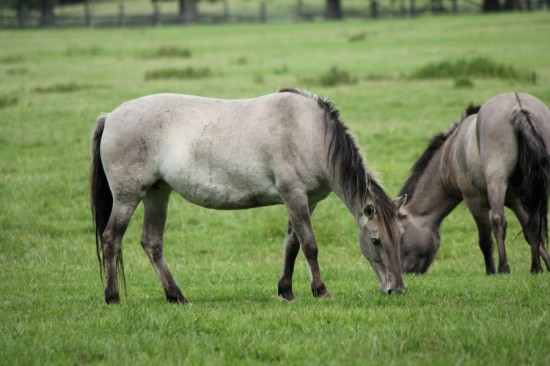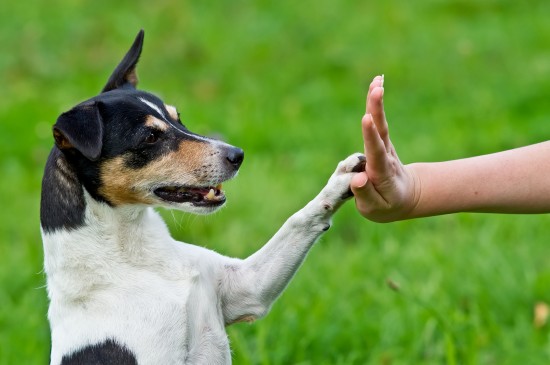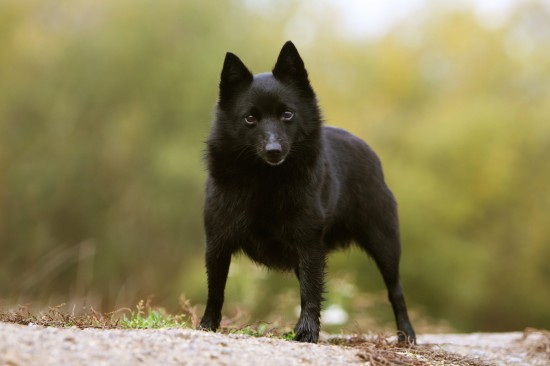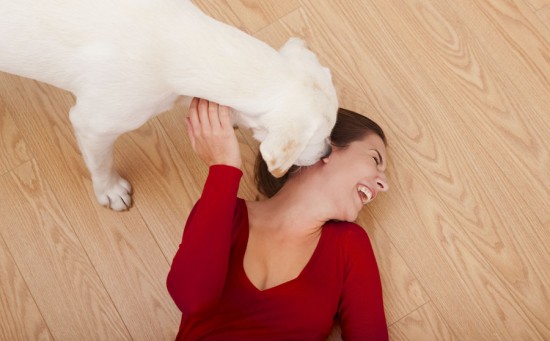
According to the Humane Society of the United States, 4.7 million people are bitten by a dog each year. 80% of those bites are by dogs the people know. It is also estimated that half of the reported b...
According to the Humane Society of the United States, 4.7 million people are bitten by a dog each year. 80% of those bites are by dogs the people know. It is also estimated that half of the reported bites are on children under the age of 13. Children under the age of 5 are most likely to be bitten, and again, most of these bites come from a dog that the child knows, such as the family dog or that of a relative, neighbor or friend.
Children seem to be more likely to be bitten by dogs than adults. But why is this? For one, a child has a tendency to make more sudden movements than an adult, and quick movements can sometimes stimulate a dog抯 prey drive (the instinct within a dog to give chase). Also, children speak in higher pitched voices, and often are louder than adults. This can sometimes startle a dog, making him likely to bite. Children also can frustrate a dog by rough play and teasing, or they can inadvertently inflict pain with the pull of a tail or a poke in the eye. Finally, smaller children are closer to a dog抯 eye level, making it easier for a dog to feel threatened by eye-to-eye contact, which can result in the child being bitten in the face.
How then can we keep our children safe around dogs? It is important that parents and teachers instruct children on how to approach and handle a dog. Here are some child and dog safety tips from a professional dog trainer:
1. Never approach a dog you do not know. The dog may look friendly, when in fact, it may not be. People think that a wagging tail means the dog is friendly. This is not always the case. Many people have been bitten by dogs that were wagging their tail, so stay away from dogs you do not know.
2. Always ask the dog抯 owner for permission before you pet the dog. This even applies to dog抯 you know. You never know when a dog, feeling startled or cornered, may attack. Even friendly dogs are candidates to bite.
3. Do not invade the dog抯 space. Allow the dog to come up to you and sniff the top of your closed fist (palm down). If the dog doesn抰 want to come and greet you, respect that and leave it alone. Don抰 approach a dog from behind or straight on. Approach the dog from the side, and remember to not make any sudden moves.
4. Never get in a dog抯 face. While this tip is similar to tip #3, it warrants its own paragraph. Getting into a dogs face is very dangerous, as the dog can take this as a challenge and bite. And remember to never stare down a dog. This can also be taken as a challenge, which can provoke the dog抯 fight drive. Instead, make eye contact with the dog, and then look away. When you take your eyes off the dog you are signaling to the dog that you are not a threat to them.
5. Never tease a dog. You don抰 like to be teased, neither do dogs.
6. Do not approach a dog that has been tied up or left at the end of a chain. Again, any dog that feels threatened could potentially attack.
7. Tell an adult immediately if you see a dog that is loose in your neighborhood.
8. Never touch a dog while it is eating. The dog could feel that you are a threat to take away its food, so stay back and let him finish. This includes dog bones and even toys, if the dog has a strong toy drive.
9. Do not scream or run away from a dog. If you are approached by a strange dog and you feel scared, fold your arms, stand still, look away, and completely ignore it until it loses interest in you and goes away. If you can, back away slowly away with your arms still folded. Do not run! This could cause the dog to begin chasing you. ?10. If the dog tries to bite you, put something between you and the dog, and back away to a safe place. Do not fight back, as this may increase the dog抯 fight drive and only make him bite harder. Instead, slowly try to back away, or get to safety. ?11. Never roughhouse with any dog. No hitting, wrestling, tugging, play biting, etc. These things may be cute when the dog is just a pup, but as that pup grows, they can become more serious. ?12. Make sure your own dog knows the pecking order. Dogs are pack animals, meaning they live in a group with a strict social structure. When a dog joins your household, he needs to learn his position within your family 損ack.?He is always testing to see if he can move up in rank. For safety and comfort, everyone in the family needs to be higher in the pack order than the dog. For smaller children, try putting their hand and foot in the dog抯 food (before you feed the dog). This will get the child抯 scent on the food, thus helping the dog understand that even the child is higher in rank than the dog. ?13. Never touch a sleeping dog. This could startle him or her, so always speak to a sleeping dog before touching him. He might bite to defend himself before he realizes who you are. ?14. Never leave a small child alone with any dog. ?15. Never wave sticks or other objects around a dog. Often, when a child waves an uncommon object, such as a stick, or throws a stone, the dog may try to protect itself. ?16. Know which parts of a dog抯 body are more sensitive to the touch. Most dog breeds will react strongly to having their tail pulled or stepped on. Some dogs do not like to have their paws touched. Also, try to avoid contact with the eyes, ears, and whisker areas. ?Teaching your child these dog safety tips can help keep them from being bitten, and can help your child develop a healthy respect for dogs. Caring For The Veteran Horse Or Pony
Caring For The Ve
Caring For The Veteran Horse Or Pony
Caring For The Ve
 Canine Communication - Three Ways In Which You Might Be Doing Your Dog A Disservice
Canine Communicat
Canine Communication - Three Ways In Which You Might Be Doing Your Dog A Disservice
Canine Communicat
 Schipperke Dog Hereditary Health And Longevity
Schipperke Dog He
Schipperke Dog Hereditary Health And Longevity
Schipperke Dog He
 Top Tips On How To Feed A Pet Rabbit
Top Tips On How T
Top Tips On How To Feed A Pet Rabbit
Top Tips On How T
 Dealing With Visitors And Your Dog
Dealing With Visi
Dealing With Visitors And Your Dog
Dealing With Visi
Copyright © 2005-2016 Pet Information All Rights Reserved
Contact us: www162date@outlook.com